Summer is in full swing and as the temperatures rise, it is crucial to prioritize heat safety in the workplace. The Occupational Safety and Health Administration (OSHA) provides guidelines and resources to ensure that workers are protected from the dangers of extreme heat. Understanding the heat index and taking necessary precautions can prevent heat-related illnesses and injuries.
Printable Osha Heat Index Chart
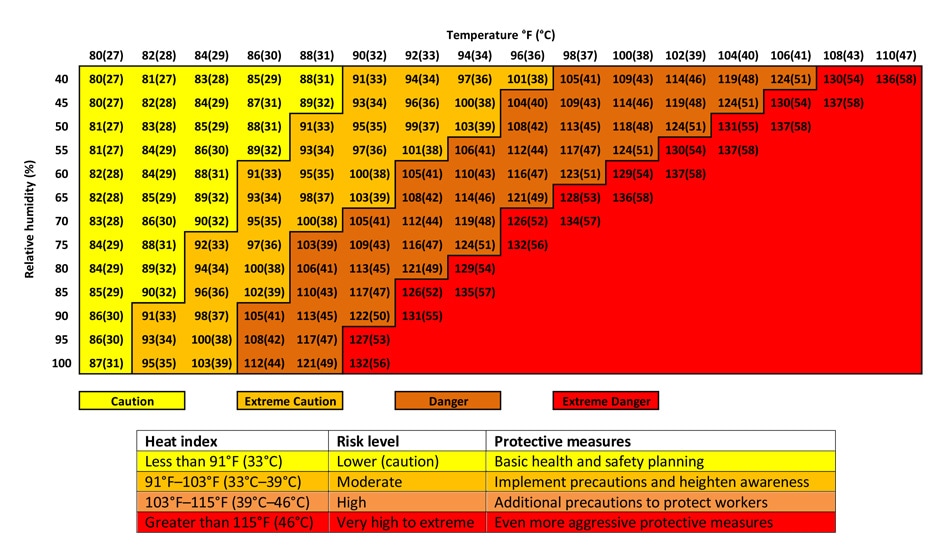 The printable Osha Heat Index Chart is a valuable tool to assess the level of heat stress and its potential dangers in different temperature and humidity conditions. It helps workers and employers identify the appropriate protective measures needed to prevent heat-related illnesses. By referring to the heat index chart, individuals can determine the risk level and make informed decisions to protect their health and well-being.
The printable Osha Heat Index Chart is a valuable tool to assess the level of heat stress and its potential dangers in different temperature and humidity conditions. It helps workers and employers identify the appropriate protective measures needed to prevent heat-related illnesses. By referring to the heat index chart, individuals can determine the risk level and make informed decisions to protect their health and well-being.
Heat Safety in the Workplace
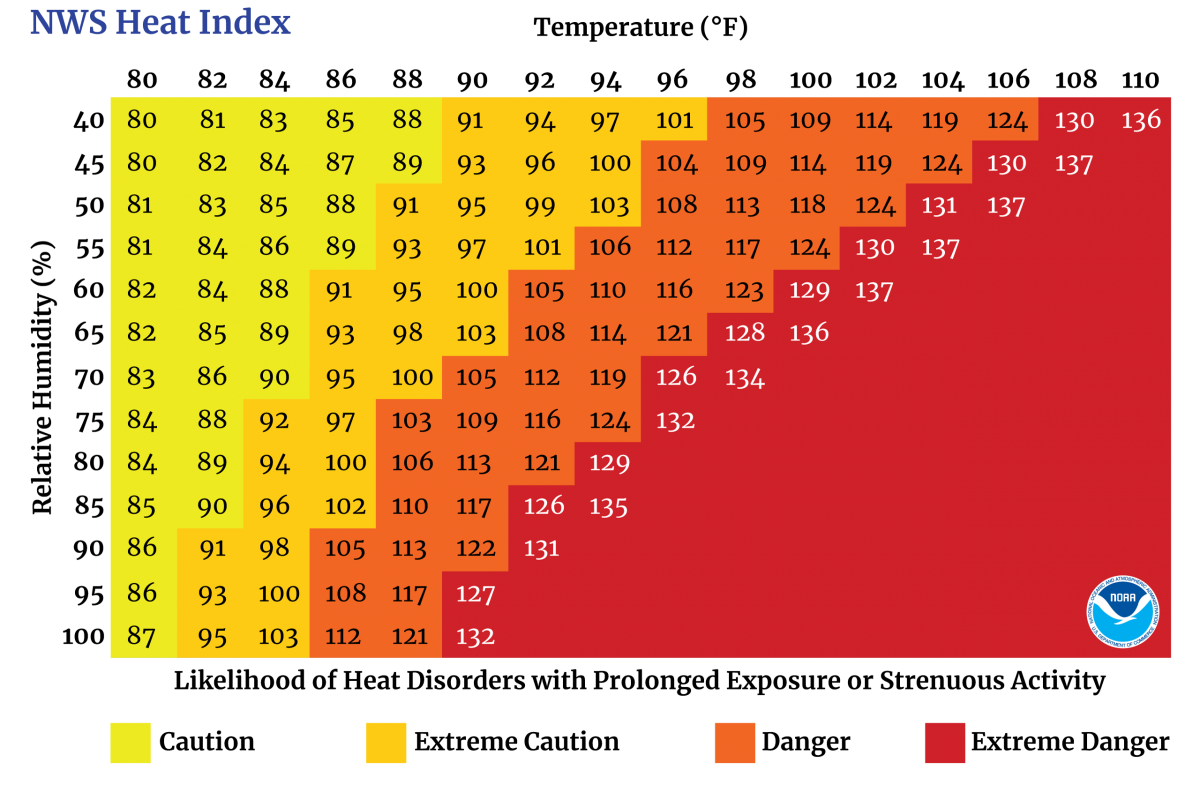 Environmental Safety, Sustainability, and Responsibility (ESSR) at the University of Maryland emphasize the importance of heat safety in the workplace. They provide comprehensive guidelines to create a safe and comfortable working environment during hot weather conditions. By implementing proper heat safety protocols, such as providing cool and shaded resting areas, frequent breaks, and access to water, employers can prioritize the well-being of their employees.
Environmental Safety, Sustainability, and Responsibility (ESSR) at the University of Maryland emphasize the importance of heat safety in the workplace. They provide comprehensive guidelines to create a safe and comfortable working environment during hot weather conditions. By implementing proper heat safety protocols, such as providing cool and shaded resting areas, frequent breaks, and access to water, employers can prioritize the well-being of their employees.
Heat Safety Tool
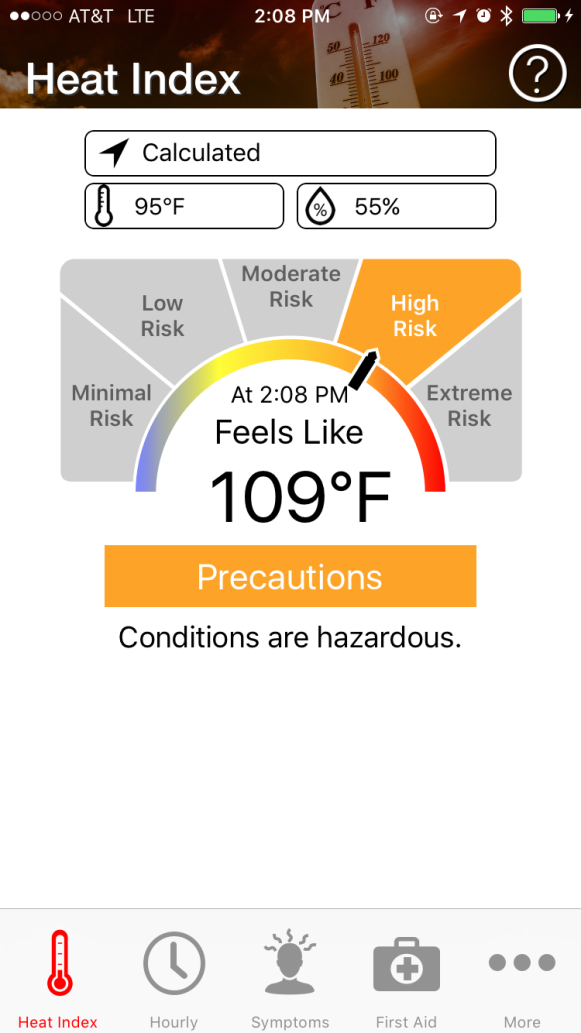 OSHA’s Heat Safety Tool is a mobile application that enables workers and supervisors to calculate the heat index of their worksite. This tool provides real-time information and recommends the necessary precautions to prevent heat-related illnesses. By using this app, individuals can assess the level of risk and take appropriate measures to protect themselves and their colleagues.
OSHA’s Heat Safety Tool is a mobile application that enables workers and supervisors to calculate the heat index of their worksite. This tool provides real-time information and recommends the necessary precautions to prevent heat-related illnesses. By using this app, individuals can assess the level of risk and take appropriate measures to protect themselves and their colleagues.
Heat Stress and Worker Safety
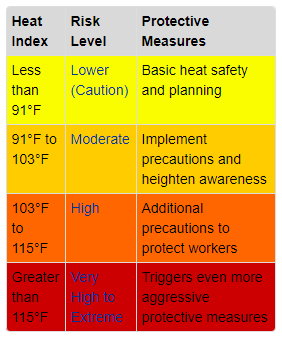 The image above highlights the importance of recognizing signs and symptoms of heat stress in workers. Heat stress can lead to serious health conditions such as heat exhaustion and heatstroke. It is crucial to educate workers about the risks associated with prolonged exposure to extreme heat and provide them with the necessary training to prevent these conditions. Employers should consider implementing engineering controls, administrative controls, and personal protective equipment to minimize the risk of heat-related illnesses.
The image above highlights the importance of recognizing signs and symptoms of heat stress in workers. Heat stress can lead to serious health conditions such as heat exhaustion and heatstroke. It is crucial to educate workers about the risks associated with prolonged exposure to extreme heat and provide them with the necessary training to prevent these conditions. Employers should consider implementing engineering controls, administrative controls, and personal protective equipment to minimize the risk of heat-related illnesses.
Heat Stress Monitoring - OHSA Occupational Health Services Australia
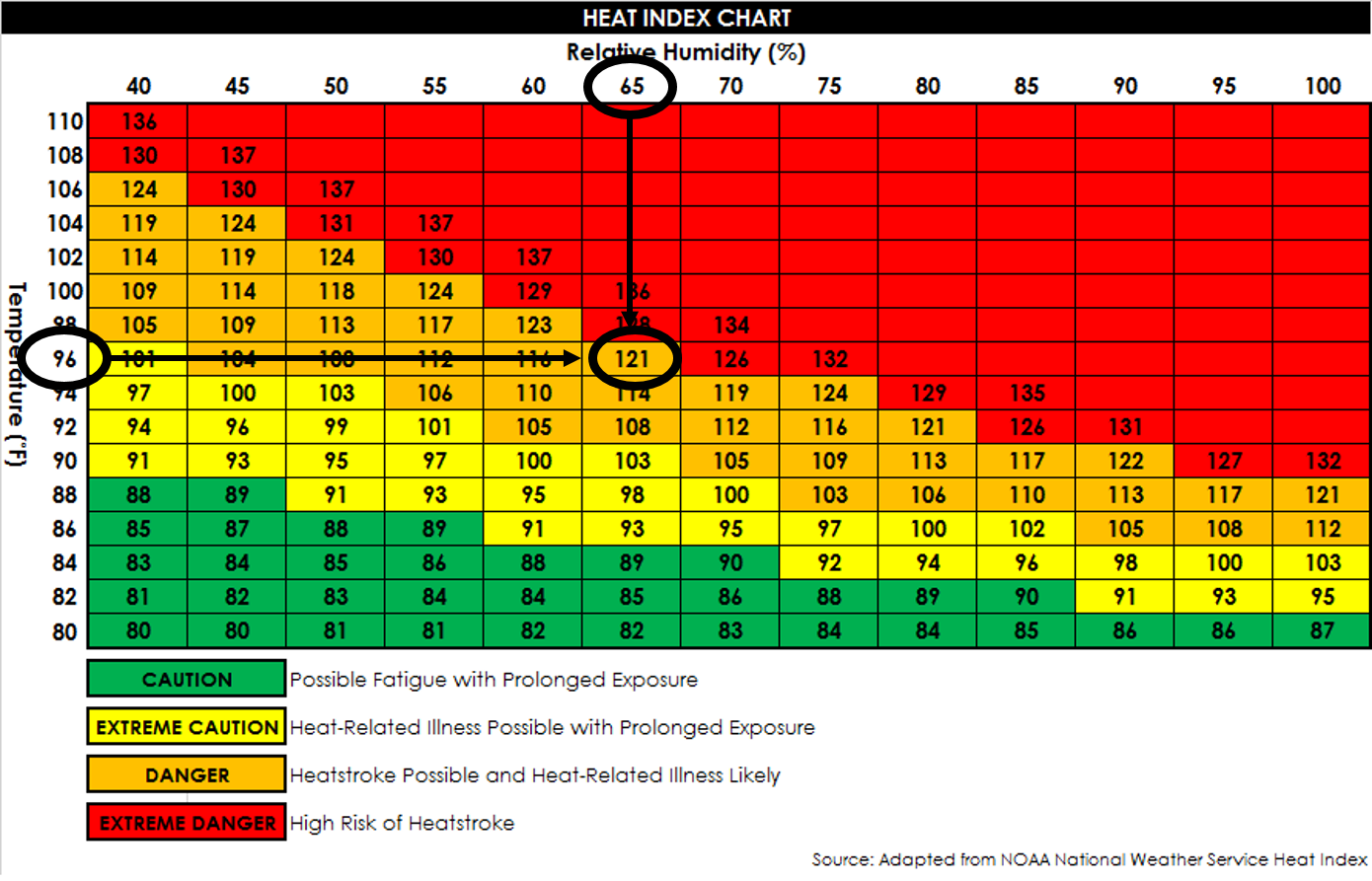 OHSA Occupational Health Services Australia emphasizes the importance of heat stress monitoring in workplaces. Through frequent monitoring of temperature and humidity levels, employers can identify potential hazards and take proactive measures to prevent heat-related illnesses. This includes implementing strategies such as modifying work schedules, providing additional breaks, and ensuring proper ventilation in work areas.
OHSA Occupational Health Services Australia emphasizes the importance of heat stress monitoring in workplaces. Through frequent monitoring of temperature and humidity levels, employers can identify potential hazards and take proactive measures to prevent heat-related illnesses. This includes implementing strategies such as modifying work schedules, providing additional breaks, and ensuring proper ventilation in work areas.
Do You Know Today’s Heat Index? - LHSFNA
Laborers’ Health and Safety Fund of North America (LHSFNA) focuses on raising awareness about the importance of knowing the heat index to protect workers’ health. By regularly checking the heat index, workers and employers can make informed decisions about the necessary precautions to take. This includes adjusting work activities, providing rest breaks in shaded areas, and ensuring access to drinking water.
Promoting Heat Safety in Construction - Perlo Construction
 Perlo Construction emphasizes the significance of promoting heat safety in the construction industry. Construction workers often face additional challenges due to the nature of their work, which includes exposure to direct sunlight and physically demanding tasks. The company recommends various practices such as acclimatization, proper hydration, and providing protective clothing to ensure the well-being of their workers during hot weather conditions.
Perlo Construction emphasizes the significance of promoting heat safety in the construction industry. Construction workers often face additional challenges due to the nature of their work, which includes exposure to direct sunlight and physically demanding tasks. The company recommends various practices such as acclimatization, proper hydration, and providing protective clothing to ensure the well-being of their workers during hot weather conditions.
Heat-Related Emergencies
 The image above illustrates the dangers of heat-related emergencies and provides essential information on how to recognize and respond to these situations. Heat-related emergencies, such as heat exhaustion and heatstroke, require immediate medical attention. Being able to identify the symptoms and taking prompt action can save lives. It is crucial to stay vigilant and look out for one another, especially during extremely hot weather.
The image above illustrates the dangers of heat-related emergencies and provides essential information on how to recognize and respond to these situations. Heat-related emergencies, such as heat exhaustion and heatstroke, require immediate medical attention. Being able to identify the symptoms and taking prompt action can save lives. It is crucial to stay vigilant and look out for one another, especially during extremely hot weather.
Printable Osha Heat Index Chart
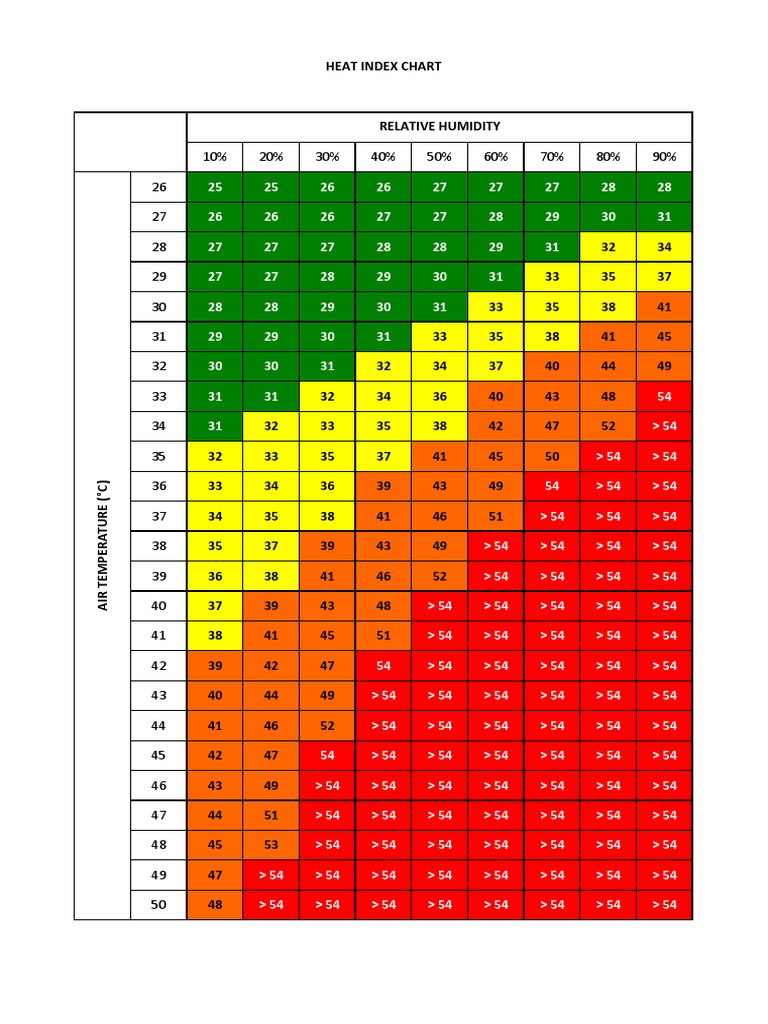
What is Thermal Perception? - Electrical e-Library.com
 Lastly, the image above highlights the concept of thermal perception in relation to the heat index. Understanding how individuals perceive and respond to heat is essential in implementing effective heat safety measures. By considering factors such as humidity and air movement, employers can create a comfortable and safe working environment for their employees.
Lastly, the image above highlights the concept of thermal perception in relation to the heat index. Understanding how individuals perceive and respond to heat is essential in implementing effective heat safety measures. By considering factors such as humidity and air movement, employers can create a comfortable and safe working environment for their employees.
As we navigate the summer months, prioritizing heat safety is paramount. By utilizing these resources and following the guidelines provided by OSHA and other organizations, we can ensure the well-being of workers and prevent heat-related illnesses. Remember to stay hydrated, take frequent breaks in shaded areas, and look out for one another during hot weather conditions. Together, we can create a safer and more inclusive workplace for all.